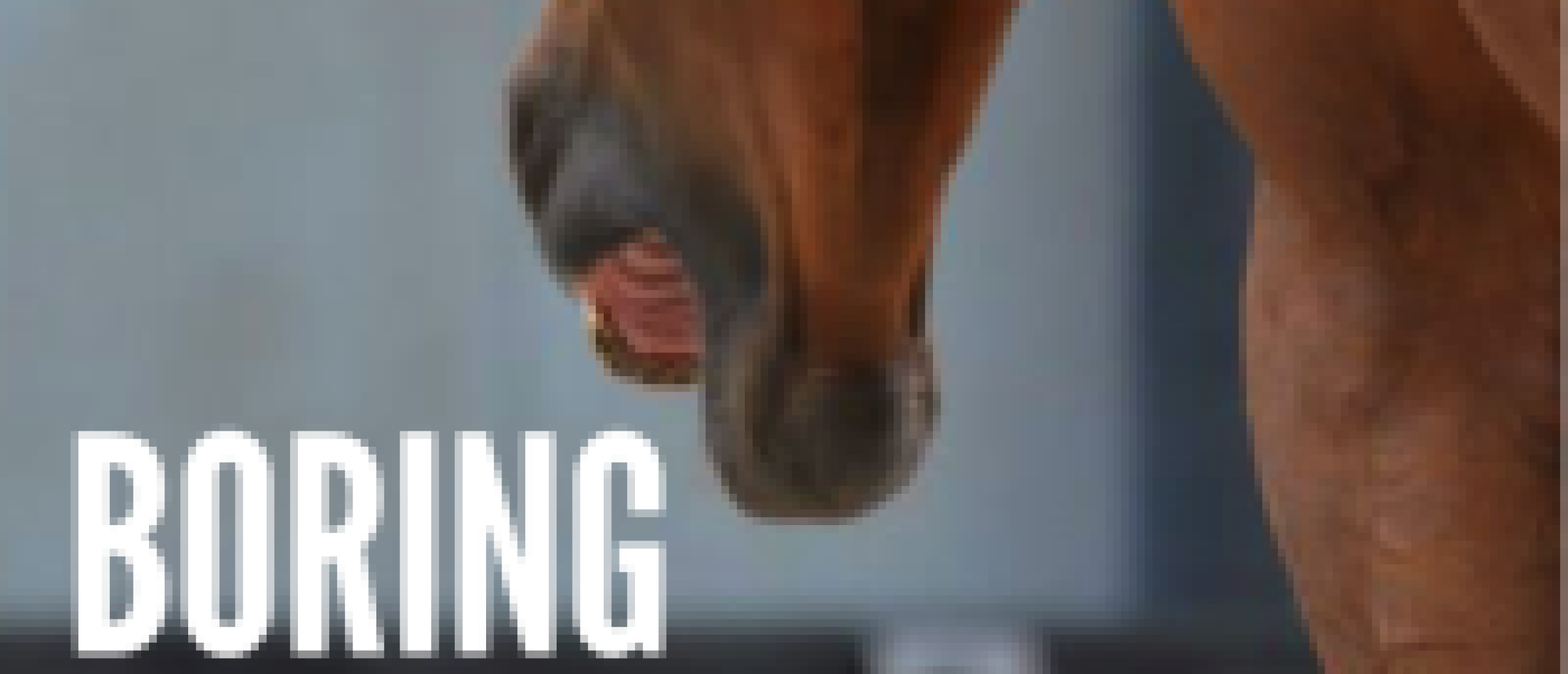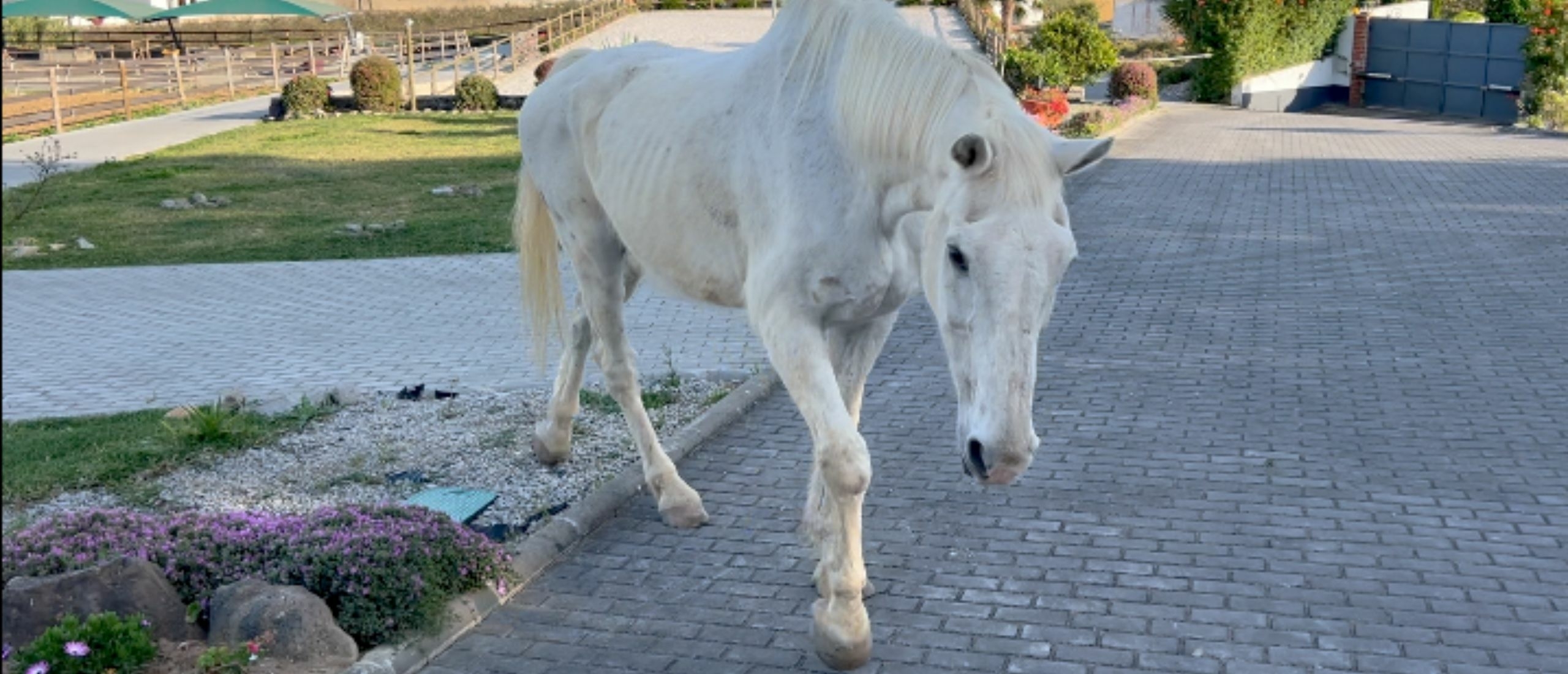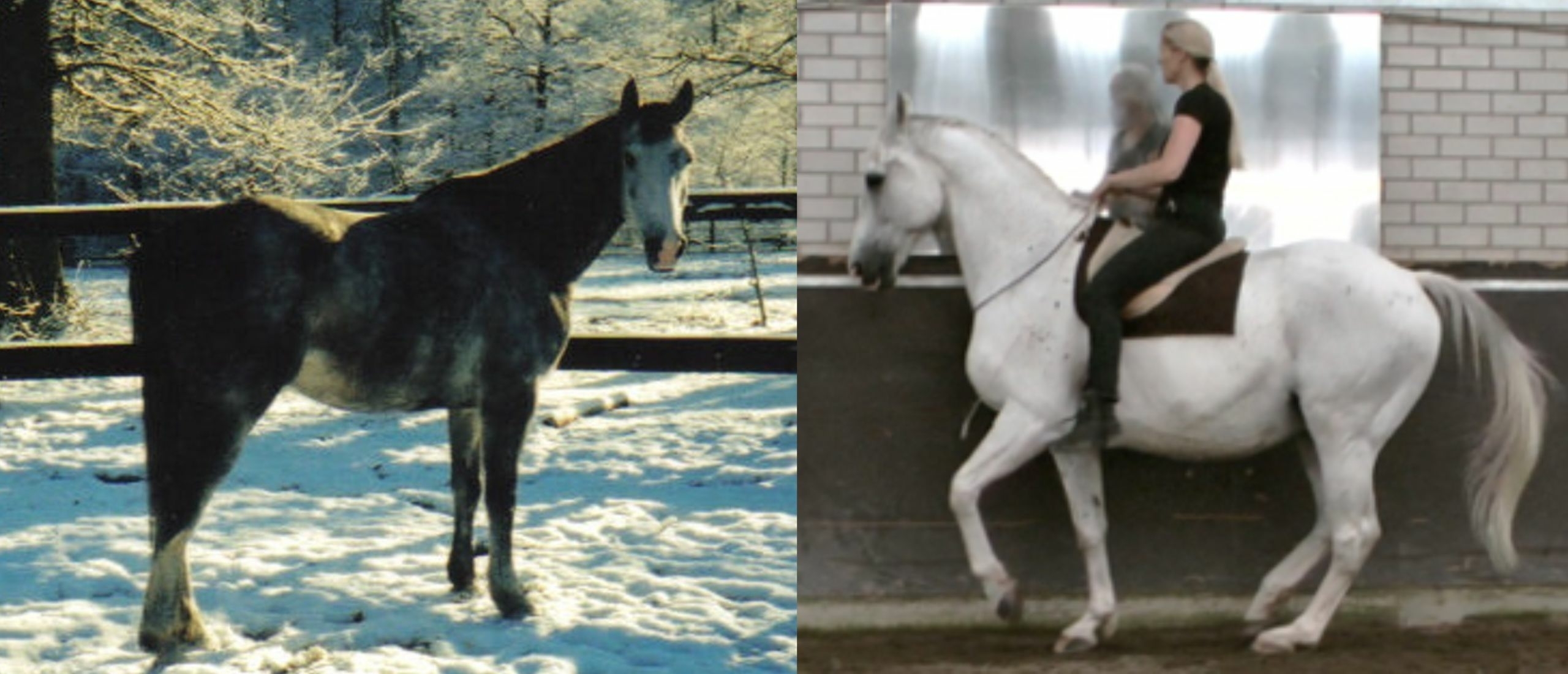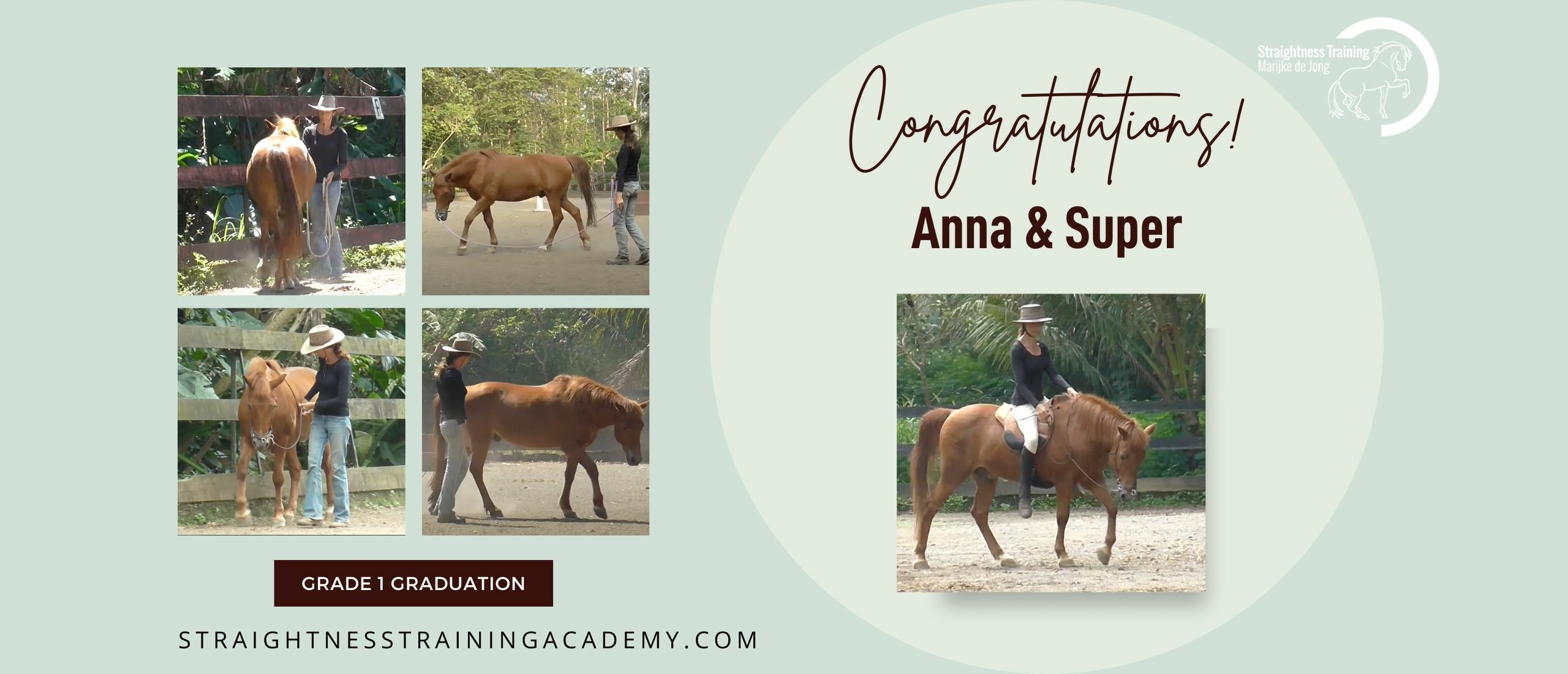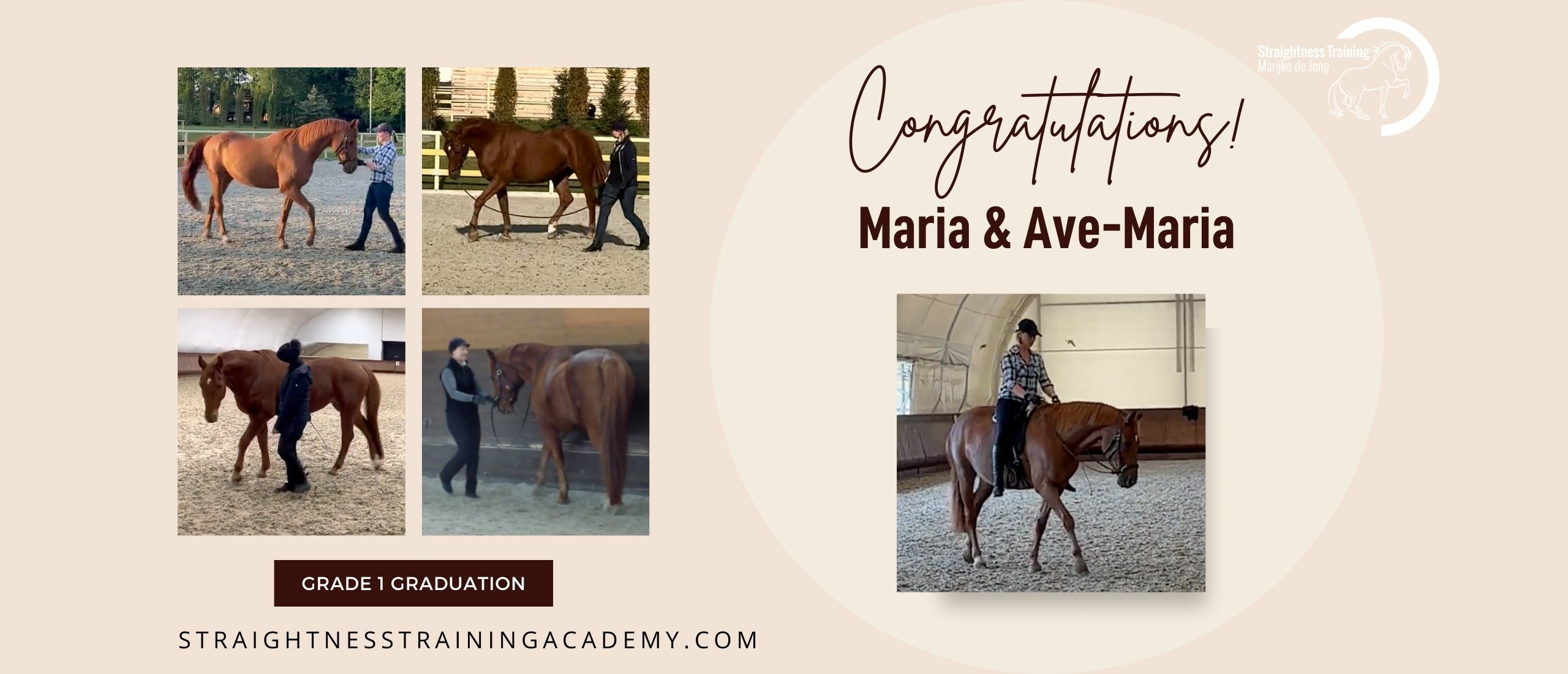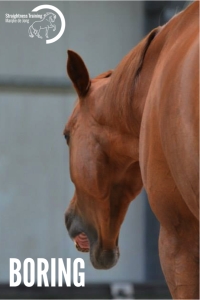 When riders start a new method, then - after practicing the basics a few times - they often say that "their horse gets bored". Now, most of the time it's a projection of our own 'boredom';
When riders start a new method, then - after practicing the basics a few times - they often say that "their horse gets bored". Now, most of the time it's a projection of our own 'boredom'; - When we are only practicing the 'names' of the exercise and not really the 'essence', that might lead to loss of interest.
- Or when we are only concentrating on the WHAT of an exercise and not on the WHY, that might also lead to a 'dull' training.
-
Boredom also arises if we start to compare with yesterday. When we start to expect: when we stop having an open mind for all the tiny details, when we stop being just curious and interested in what happens, when we stop having a beginner's mind, when we stop appreciating.
Tip #1: Start With Why
Boredom can come from not really knowing WHY we do WHAT we do. But we should never lose sight of the essence, and always start with why. The why should be our target. Also, it's about not knowing the Bigger Picture; Not knowing where we are right now, what’s coming next, and what we're heading for. That might make you feel aimless. Now when you don't know why you do what you do and where to go, how would your horse know?Tip #2: Be Curious
Even advanced riders and professionals might experience this feeling of 'boredom' creeping in. If so, then there’s a pretty good chance that we’re not being curious enough. Not interested in the right way. But if we’re curious, if we’re aware, if we're in the now, if we're genuinely interested in what’s happening around us at this moment, then there’s never really room for boredom. But if we’re solely intent on achieving a particular goal, then there’s plenty of room for boredom to creep in, because we’re waiting for something to happen in the future, rather than simply watching and noticing a beautiful process taking place right now.
If so, then there’s a pretty good chance that we’re not being curious enough. Not interested in the right way. But if we’re curious, if we’re aware, if we're in the now, if we're genuinely interested in what’s happening around us at this moment, then there’s never really room for boredom. But if we’re solely intent on achieving a particular goal, then there’s plenty of room for boredom to creep in, because we’re waiting for something to happen in the future, rather than simply watching and noticing a beautiful process taking place right now. Tip #3: Keep a Beginner's Mind
When we’re doing the same exercises each time, of course, it's really easy for it to feel quite as a routine. And it's very easy for it to lose a sort of its freshness. So it’s really important to maintain a 'beginner's mind'. It’s when we’re doing the exercise as though it’s the very first time. Not expecting. Not anticipating. When we do the exercises in this way, appreciation can naturally arise. So the Beginner's Mind is a very innocent mind.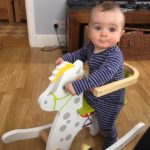 Which such a mind it's to be like the way young children interact with the world. With a sense of curiosity and wonder. And there’s a certain amount of delight inherent in that interest in the world. Kids aren’t thinking about the outcome necessarily. They simply enjoy exploring for its own sake. With an open, investigating mind, the hidden lessons will naturally unfold!
Which such a mind it's to be like the way young children interact with the world. With a sense of curiosity and wonder. And there’s a certain amount of delight inherent in that interest in the world. Kids aren’t thinking about the outcome necessarily. They simply enjoy exploring for its own sake. With an open, investigating mind, the hidden lessons will naturally unfold! Tip #4: Empty Your Cup
Another reason that advanced riders get bored about the basics of ST, is because they have an 'I know it all' attitude. So here's nice Zen story to illustrate that: "A professor once visited a Japanese master to inquire about Zen. The master served tea, while the professor was sharing all his insights. When the visitor’s cup was full, the master kept pouring. Tea spilled out of the cup and over the table. “The cup is full!” said the professor. “No more will go in!” “Like this cup,” said the master, “You are full of your own opinions and speculations. How can I show you Zen unless you first empty your cup?”" So when our cup is full, there is no room for new experiences. There is no room for new things too unfold. The usefulnuess of the cup, is its emptiness. So therefore, make sure to empty your cup every once and a while.
"A professor once visited a Japanese master to inquire about Zen. The master served tea, while the professor was sharing all his insights. When the visitor’s cup was full, the master kept pouring. Tea spilled out of the cup and over the table. “The cup is full!” said the professor. “No more will go in!” “Like this cup,” said the master, “You are full of your own opinions and speculations. How can I show you Zen unless you first empty your cup?”" So when our cup is full, there is no room for new experiences. There is no room for new things too unfold. The usefulnuess of the cup, is its emptiness. So therefore, make sure to empty your cup every once and a while. Tip #5: Stay In The Now
When we practice ST, it’s very tempting to remember previous training sessions. Hoping that an enjoyable one will be repeated. Or perhaps fearing, that a more challenging one will reappear. The trouble is, these ideas, our hopes, and our fears, can really get in the way of a direct experience with our horse. Of this moment. Because rather than observing the training sessions as it is, allowing it to unfold naturally, we’re busy trying to create an idea of what we would like it to look like instead. Therefore, stay in the now. Again, approach ST with a Beginner's Mind, an open mind, a curious mind. It means, entering the riding arena, without any preconceptions or assumptions. With no idea what we’ll find, or what the outcome will be. So with a Beginner’s Mind:
Of this moment. Because rather than observing the training sessions as it is, allowing it to unfold naturally, we’re busy trying to create an idea of what we would like it to look like instead. Therefore, stay in the now. Again, approach ST with a Beginner's Mind, an open mind, a curious mind. It means, entering the riding arena, without any preconceptions or assumptions. With no idea what we’ll find, or what the outcome will be. So with a Beginner’s Mind: - We’re going into each session, recognizing that the experience is now and new.
- Allowing our horse to be different, the conditions to be different, the situation to be different.
Tip #6: Get Interested In The Details
Another reason that we get bored about the basics of ST, with groundwork, is when we are too eager and too hungry for the 'fancy exercises'. But groundwork is like the footings under a house: Under every house is a foundation, and these foundations are footings. Most of the time we take footings for granted, and sometimes we can, when a common footing is okay to carry a standard house. On the other hand, when the house is unique, or when there's a soft zone under a part of the foundation, there can be trouble: Even 2mm of uneven settling is enough to cause cracks in masonry, tile, cement or plaster. The devil is in the detail! It's the uneven 2mm that will cause the most trouble! The same with horses: Even 2mm off track in the basic exercises of groundwork is enough to cause cracks in the advanced groundwork exercises, and in longeing, work in hand, riding, or ST at liberty:- Without a proper balance, suppleness, and shape in the basic exercises, our horse might stiffen himself in the advanced exercises or lose the cleanness of the gait in the trot or canter.
- Without a good lateral bending, forward down tendency, and stepping under of the inside hind leg (LFS) close to us, we'll never get a proper LFS on the bigger circle in longeing.
- Without a nice yielding on the inside rein in groundwork, our horse won't give us the bend, then we'll never get our horse searching towards the outside rein in work in hand.
- Without a proper preparation in groundwork, longeing and work in hand, chances are, that we'll have to deal with too much imbalance while riding.
- Of course, liberty is a great place to start, but when it comes to ST at liberty, we want to do the lateral movements, piaffe, and pirouette at liberty. Therefore it might take a lot more development time if we don't shape the quality in groundwork first.
Tip #7: Widen, Broaden, Deepen Your Fundament
Every time we made the base wider, we can rebuild the exercises and our partnership with even more quality. In time, the ST pyramid gets wider and wider at the bottom! It will always have a solid foundation on which we can rely! We can always fall back on this solid foundation. But sometimes we fall down, because there is something dow there that we are supposed to find. For example, we can do everything nicely 'physically' seen, but when we let go of our reins or line, our horse says "I'm outta here!". That means, we need to repair something on the mental basic level of ST:- We need to find ways to strengthen our relationship.
- We need to find ways to grow our partnership.
- We need find ways to increase our horse's motivation.
- We need to find a better way to guide our horse.
Tip #8: From Boredom To Excitement
Once we get the basics right, we start to experience the opposite of boredom which is: Excitement! Because:- ST has 5 training pillars: groundwork, longeing, work in hand, riding, and liberty
- and in each training pillar, we can practice over 20 basic and advanced exercises,
- which we can all do in walk, trot, and canter,
- in collection and extension.
Join My Free Training
Jump on over to my free training were you get a three-step process for implementing Straightness Training in your training sessions right now. Watch two videos and download your free eBook about the ST Exercises which will help you put the information into action right away:


